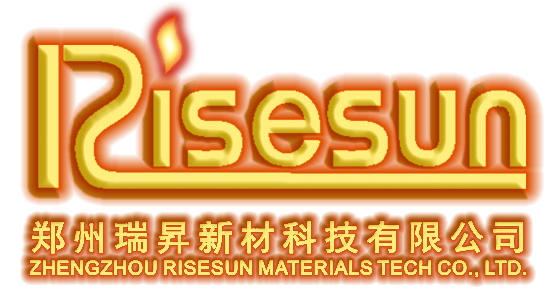02
2024
-
10
Unlocking High-Performance Applications with Molybdenum Disilicide Heaters
Unlocking High-Performance Applications with Molybdenum Disilicide Heaters Introduction to Molybdenum Disilicide Heaters Molybdenum disilicide (MoSi2) heaters are revolutionizing heating technology across various industries by providing high-performance applications in extreme environments. Known for their exceptional thermal stability, ability to withstand high temperatures, and resistance to o
Unlocking High-Performance Applications with Molybdenum Disilicide Heaters
Introduction to Molybdenum Disilicide Heaters
Molybdenum disilicide (MoSi2) heaters are revolutionizing heating technology across various industries by providing high-performance applications in extreme environments. Known for their exceptional thermal stability, ability to withstand high temperatures, and resistance to oxidation, these heaters are becoming increasingly integral to manufacturing processes, materials testing, and advanced industrial applications. This article delves into the unique benefits and features of MoSi2 heaters, outlining how they can unlock high-performance applications in your industry.
Understanding Molybdenum Disilicide: Composition and Properties
Molybdenum disilicide is a compound formed from molybdenum and silicon, known for its robust physical and chemical properties. It possesses a melting point exceeding 2000°C, making it ideal for high-temperature applications. The material’s high thermal conductivity ensures efficient heat transfer, while its low thermal expansion minimizes the risk of thermal shock.
Key Properties of Molybdenum Disilicide
1. **High Thermal Stability**: MoSi2 retains its structural integrity under extreme temperatures, providing reliable heating performance.
2. **Oxidation Resistance**: The formation of a protective silica layer on the heater's surface prevents further oxidation, enhancing durability.
3. **Low Thermal Expansion**: This property reduces the risk of damage due to thermal cycling, allowing for consistent performance.
4. **Excellent Electrical Conductivity**: MoSi2’s conductive properties make it effective for use in electric heating elements.
Applications of Molybdenum Disilicide Heaters
Industries are increasingly adopting molybdenum disilicide heaters for various applications, including:
1. Industrial Furnaces
MoSi2 heaters are widely utilized in industrial furnaces for processes such as sintering, melting, and heat treatment. Their ability to maintain high temperatures and resist thermal shock makes them ideal for these demanding environments.
2. Laboratory Equipment
In laboratories, MoSi2 heaters facilitate precise temperature control for experiments and research. Their reliability and high-temperature capabilities are essential for achieving accurate results in materials testing.
3. Aerospace and Automotive Industries
The aerospace and automotive sectors benefit from molybdenum disilicide heaters' thermal efficiency and durability. These heaters are used in engine testing, component manufacturing, and material development, enhancing performance while reducing energy consumption.
Advantages of Molybdenum Disilicide Heaters
Using molybdenum disilicide heaters offers several advantages over traditional heating elements:
1. Energy Efficiency
Molybdenum disilicide heaters provide efficient heating solutions, consuming less energy than conventional options. Their high thermal conductivity ensures rapid heating, reducing overall energy costs.
2. Longevity and Durability
The lifespan of MoSi2 heaters is significantly longer than that of traditional heating elements, thanks to their oxidation resistance and thermal stability. This longevity translates to lower replacement costs and reduced downtime.
3. Versatility
Molybdenum disilicide heaters can be tailored to meet specific heating requirements, making them suitable for a wide range of applications across different industries.
How Molybdenum Disilicide Heaters Work
Understanding the operational mechanism of MoSi2 heaters is crucial for maximizing their benefits. These heaters operate by converting electrical energy into thermal energy through electrical resistance.
The Heating Process
1. **Electrical Resistance**: When an electric current passes through the MoSi2 material, it encounters resistance, generating heat.
2. **Heat Distribution**: The generated heat is uniformly distributed across the heater's surface, ensuring even heating.
3. **Temperature Control**: Advanced temperature control systems allow precise regulation of the heating elements, optimizing performance.
Challenges and Considerations
While molybdenum disilicide heaters offer numerous advantages, several challenges should be considered:
1. Initial Cost
The upfront investment in MoSi2 heaters may be higher than traditional heating elements. However, their long-term benefits often outweigh the initial costs.
2. Installation Requirements
Proper installation is essential to ensure optimal performance. Understanding the specific requirements for integration into existing systems is crucial.
Comparative Analysis: MoSi2 Heaters vs. Traditional Heating Elements
To understand the advantages of molybdenum disilicide heaters, it’s important to compare them with traditional heating options.
1. Performance
MoSi2 heaters outperform traditional materials in high-temperature applications, offering better thermal stability and efficiency.
2. Maintenance
MoSi2 heaters require less maintenance due to their longevity and durability, while traditional heaters may need frequent replacements and repairs.
Future Trends in Molybdenum Disilicide Heating Technology
As industries continue to evolve, the demand for advanced heating solutions will grow. Trends such as the integration of smart technology and improved materials science are set to enhance the capabilities of molybdenum disilicide heaters.
1. Smart Heating Solutions
The introduction of IoT and smart technology in heating systems allows for real-time monitoring and control, optimizing performance and energy usage.
2. Material Advancements
Research and development in materials science may lead to even more efficient versions of MoSi2 heaters, further expanding their applications.
FAQs
1. What industries benefit most from molybdenum disilicide heaters?
Industries such as aerospace, automotive, manufacturing, and materials testing benefit significantly from these heaters.
2. How do molybdenum disilicide heaters compare to silicon carbide heaters?
MoSi2 heaters offer higher thermal stability and better oxidation resistance than silicon carbide heaters, making them suitable for extreme applications.
3. Can molybdenum disilicide heaters be used in vacuum environments?
Yes, MoSi2 heaters can operate effectively in vacuum environments, making them ideal for specialized applications.
4. What is the typical lifespan of a molybdenum disilicide heater?
With proper care and usage, MoSi2 heaters can last several years, often exceeding the lifespan of traditional heating elements.
5. Are there any safety concerns with using molybdenum disilicide heaters?
As with any high-temperature heating element, proper installation and monitoring are essential to ensure safety and prevent overheating.
Conclusion
Molybdenum disilicide heaters are paving the way for high-performance applications in various industries. Their unique properties and advantages—ranging from high thermal stability to energy efficiency—make them an exceptional choice for demanding heating requirements. As technology advances, these heaters will continue to evolve, providing even more innovative solutions for industrial applications. By embracing molybdenum disilicide heater technology, businesses can unlock new levels of performance and efficiency, positioning themselves for success in an increasingly competitive landscape.



